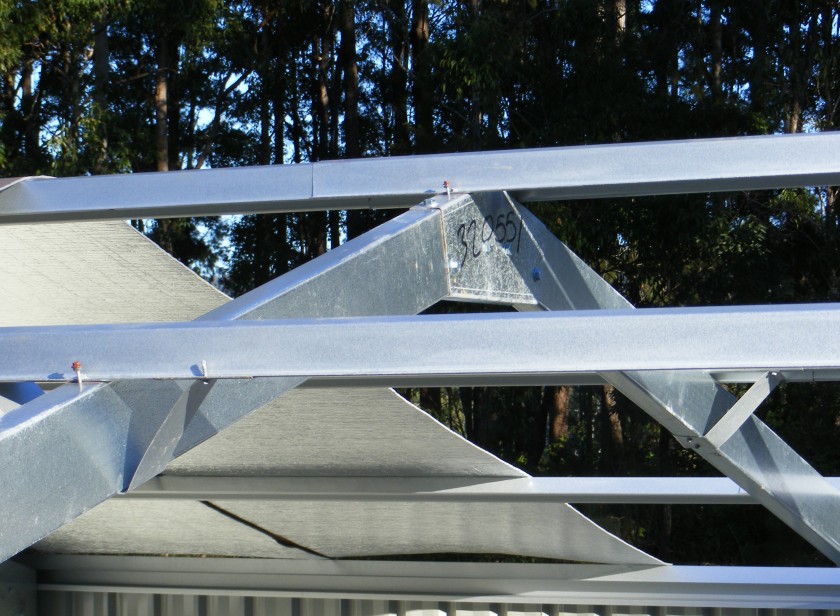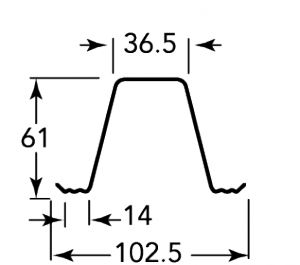LYSAGHT TOPSPAN® 61
Manufactured in Tasmania
Product Description and Features
LYSAGHT TOPSPAN® 61 is a 61mm deep profile used in the smaller framed shed and awnings market and is a convenient size to satisfy the niche market need of a section between a small purlin and large batten.
It is popular in the residential and rural markets and has found other applications such as framing, long-span plasterboard battens, fencing and handyman applications. It is commonly called a “garage batten”.
The bottom flanges have two longitudinal stiffeners/grooves for improved performance, but also act as a guide for the correct positioning of the fixing fasteners. Lapping (structural) is simple and will ensure continuity and straightness and further improve the capacity of the configuration. The lapping results in a precise snug fit without deformation of the profile and only nominal step at the lap.
- Won’t burn, warp, twist, splinter or rot and won’t be attacked by termites
- Made from high tensile Australian steel
- Fast and easy to install because they can be lapped
- Consistent straightness simplifies alignment
- Fastening is quick and easy with self drilling screws
- Easily stacked, stored and transported
- Can be used as battens for ceilings or roofs, or as light steel sections
Note:
- Store LYSAGHT TOPSPAN® 61 clear of the ground and on a slight slope to ensure draining
- Bundles should not be exposed in the open for extended periods
LYSAGHT TOPSPAN® 61 light steel sections are made from Next generation ZINCALUME® aluminium / zinc / magnesium alloy coated steel complies with AS1397 G550, AM125 (550 MPa minimum yield stress, 125 g/m2 minimum coating mass) or AS1397 G550, AM125 (500 MPa minimum yield stress, 125 g/m2 minimum coating mass).
| Thickness (BMT, mm): | 0.6 | 0.75 | 1.0 | 1.2 | |
| Yield Strength (MPa): | 550 | 550 | 550 | 500 | |
| Coating Mass (g/m²): | 125 | 125 | 125 | 125 | |
| Mass (kg/m) | 0.95 | 1.18 | 1.56 | 1.87 | |



